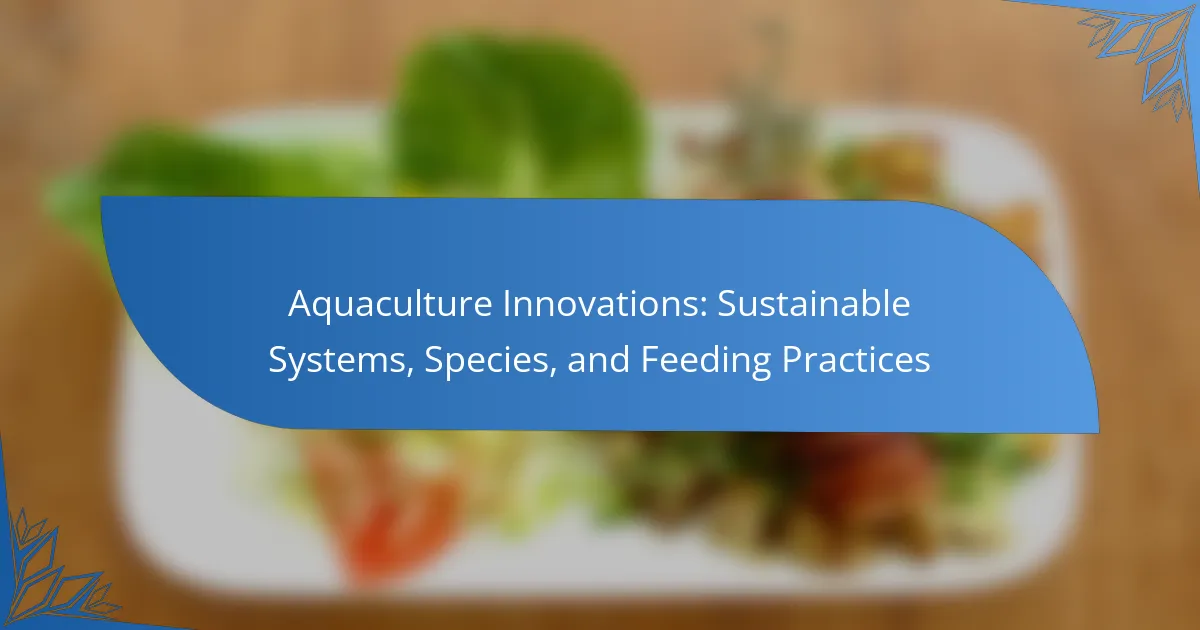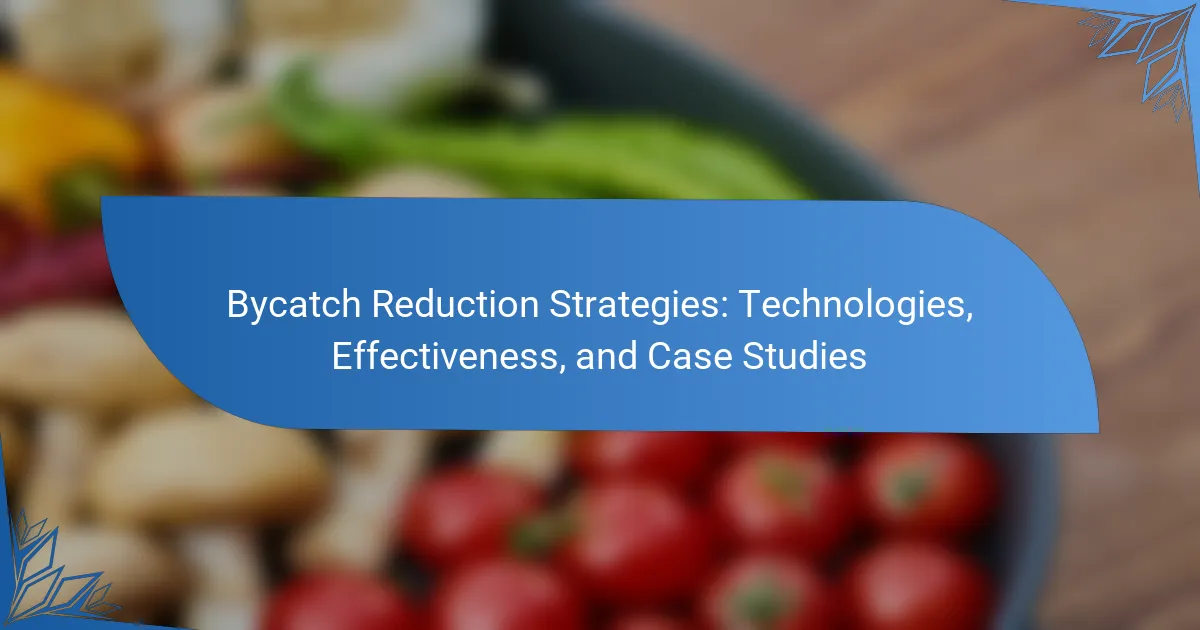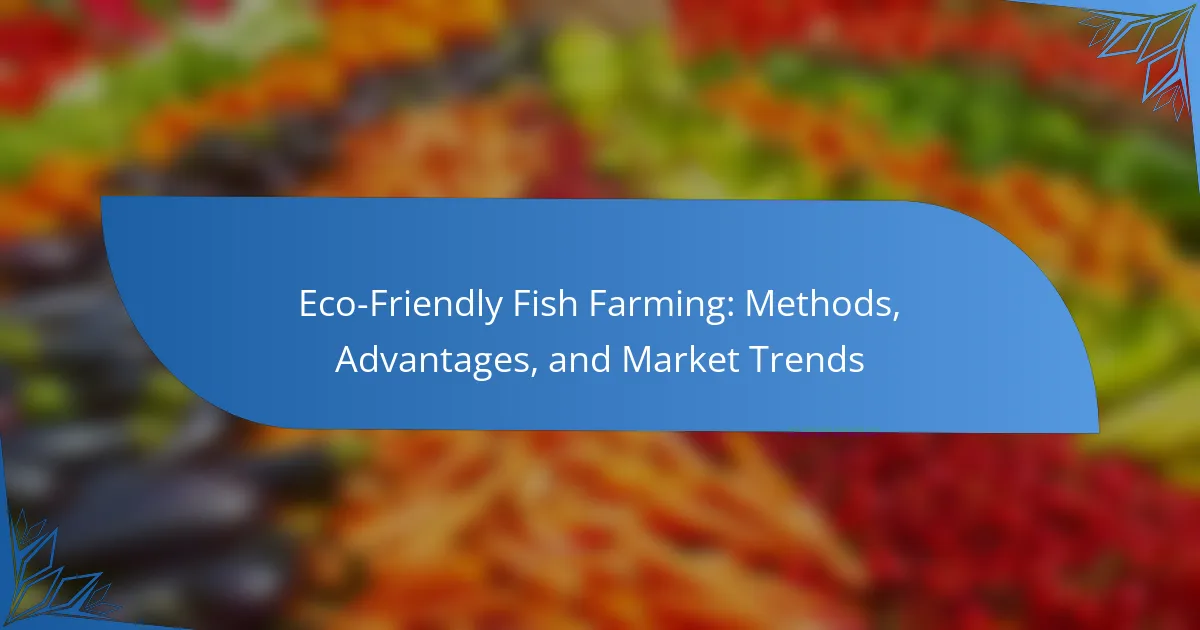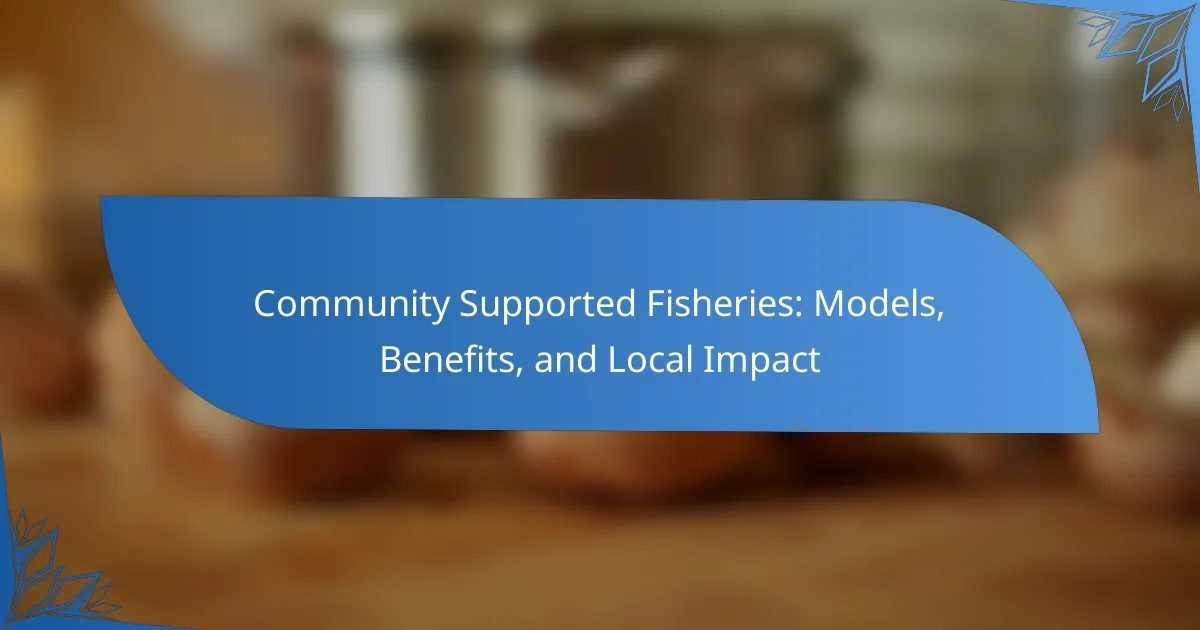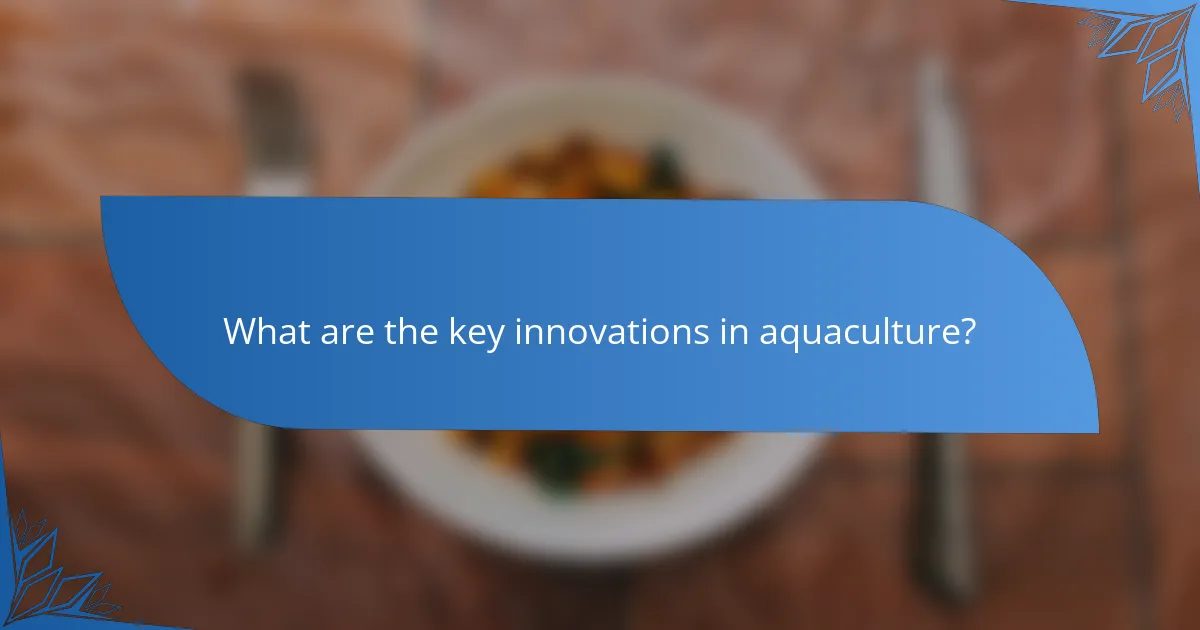
What are the key innovations in aquaculture?
Key innovations in aquaculture include recirculating aquaculture systems (RAS), integrated multi-trophic aquaculture (IMTA), and genetic selection for disease resistance. RAS allows for efficient water use and waste management. IMTA promotes biodiversity by cultivating multiple species together. Genetic selection enhances growth rates and reduces disease susceptibility. These innovations improve sustainability and productivity in aquaculture. For example, RAS can reduce water usage by up to 90%. IMTA systems can increase overall yield by utilizing waste from one species as feed for another.
How do these innovations contribute to sustainability?
Aquaculture innovations contribute to sustainability by enhancing resource efficiency and reducing environmental impact. Improved feeding practices lead to better nutrient utilization, minimizing waste and pollution in aquatic ecosystems. Sustainable species selection promotes biodiversity and reduces reliance on overfished stocks. Innovations in recirculating aquaculture systems (RAS) conserve water and energy, decreasing the overall ecological footprint. Technologies such as biofloc systems improve growth rates while recycling nutrients, further supporting sustainability goals. Research indicates that these methods can significantly lower greenhouse gas emissions associated with traditional aquaculture practices.
What technologies are driving sustainable aquaculture practices?
Aquaculture practices are being driven by several innovative technologies. These include recirculating aquaculture systems (RAS), which minimize water usage and improve waste management. RAS can reduce water exchange by up to 99%, leading to significant resource conservation. Another technology is integrated multi-trophic aquaculture (IMTA). IMTA promotes biodiversity by cultivating different species together, utilizing waste from one species as feed for another. This approach enhances ecosystem health and productivity.
Additionally, sensor technology plays a crucial role. Sensors monitor water quality parameters, ensuring optimal conditions for aquatic life. This technology can lead to increased growth rates and reduced mortality. Moreover, biotechnology advancements, such as selective breeding and genetic modification, enhance disease resistance and growth efficiency in farmed species.
Finally, feed technology innovations, including plant-based and insect-based feeds, reduce reliance on fishmeal. These alternatives contribute to sustainability by lowering overfishing pressures. Collectively, these technologies significantly contribute to the sustainability of aquaculture practices.
How do innovations improve water quality management?
Innovations improve water quality management by introducing advanced technologies and methods. These innovations include real-time monitoring systems that detect pollutants quickly. For instance, sensors can measure parameters like pH, dissolved oxygen, and turbidity continuously. Automated filtration systems can remove contaminants more efficiently than traditional methods. Additionally, biofiltration techniques utilize beneficial microorganisms to degrade harmful substances. Research shows that these innovations can reduce water treatment costs by up to 30%. Furthermore, data analytics helps predict water quality trends, allowing for proactive management strategies. Overall, these advancements lead to healthier aquatic ecosystems and more sustainable aquaculture practices.
What role do species selection and management play in aquaculture innovations?
Species selection and management are critical in driving aquaculture innovations. They influence productivity, sustainability, and economic viability. Selecting species that are well-suited to specific environments enhances growth rates and survival. Effective management practices ensure optimal health and minimize disease outbreaks. Research shows that diverse species can improve ecosystem resilience. Innovations in breeding techniques further enhance desirable traits in selected species. For example, genetically improved strains can lead to faster growth and better feed conversion. Overall, strategic species selection and management are essential for advancing sustainable aquaculture practices.
Which species are most commonly cultivated in sustainable systems?
Tilapia, salmon, and catfish are among the species most commonly cultivated in sustainable systems. Tilapia is favored for its rapid growth and adaptability to various environments. Salmon is popular due to its high market demand and efficient feed conversion ratios. Catfish thrives in warm waters and is known for its resilience in farming. These species contribute to sustainable aquaculture by minimizing environmental impact and promoting resource efficiency. Studies indicate that tilapia can be raised in systems that utilize lower-quality water sources. Salmon farming has evolved to include practices that reduce sea lice infestations and improve fish health. Catfish farming often employs recirculating aquaculture systems, enhancing sustainability.
How does species diversity impact ecosystem health in aquaculture?
Species diversity positively impacts ecosystem health in aquaculture. Diverse species can enhance resilience against diseases and environmental changes. This diversity leads to improved nutrient cycling and habitat complexity. For instance, a study by Duffy et al. (2001) demonstrated that diverse marine ecosystems are more productive. Higher species diversity can also reduce the risk of total crop failure. Additionally, mixed-species systems can optimize resource use and minimize waste. Overall, species diversity contributes to a more stable and sustainable aquaculture environment.
What are the latest feeding practices in aquaculture?
The latest feeding practices in aquaculture include the use of precision feeding, alternative protein sources, and automated feeding systems. Precision feeding tailors the diet to the specific nutritional needs of fish, improving growth rates and feed efficiency. Alternative protein sources, such as insects and single-cell proteins, reduce reliance on fishmeal and support sustainability. Automated feeding systems enhance feeding accuracy and reduce waste by delivering feed at optimal times. These advancements align with the goals of enhancing productivity while minimizing environmental impact in aquaculture.
How do alternative feed sources enhance sustainability?
Alternative feed sources enhance sustainability by reducing dependence on traditional fishmeal and fish oil. These alternative feeds often utilize by-products from agriculture and food processing. This practice decreases pressure on wild fish populations. Using plant-based proteins can lower greenhouse gas emissions associated with aquaculture. Research shows that alternative feeds can also improve feed conversion ratios, leading to more efficient resource use. Studies indicate that incorporating insect meal can provide essential nutrients while minimizing environmental impact. Additionally, alternative feeds can promote biodiversity by supporting a wider range of feed ingredients. Overall, these practices contribute to a more sustainable aquaculture industry.
What nutritional innovations are being developed for aquaculture species?
Nutritional innovations for aquaculture species include the development of alternative protein sources, such as insect meal and algae. These sources aim to reduce reliance on traditional fishmeal, which is becoming scarce. Researchers are also focusing on optimizing feed formulations to enhance growth rates and health in fish. Precision feeding technologies are being developed to tailor diets based on individual fish needs, improving feed efficiency. Additionally, probiotics and prebiotics are being incorporated into feeds to boost gut health and immunity. Studies show that these innovations can lead to more sustainable aquaculture practices. For instance, using insect meal can reduce the environmental impact of aquaculture while maintaining nutritional quality.
How do aquaculture innovations address environmental challenges?
Aquaculture innovations address environmental challenges by implementing sustainable practices and technologies. These innovations reduce pollution and resource overuse. For example, recirculating aquaculture systems (RAS) minimize water usage by recycling up to 99% of water. Integrated multi-trophic aquaculture (IMTA) enhances ecosystem balance by combining species that utilize different trophic levels. This method reduces waste and improves nutrient cycling. Furthermore, advancements in feed formulations lower reliance on wild fish stocks. They utilize plant-based ingredients, which decreases pressure on marine ecosystems. Moreover, genetic improvements in species enhance growth rates and disease resistance, leading to more efficient production. These innovations collectively contribute to a more sustainable aquaculture industry.
What are the economic impacts of adopting sustainable aquaculture practices?
Adopting sustainable aquaculture practices leads to significant economic impacts. These practices can enhance profitability for fish farmers by reducing feed costs and improving growth rates. Sustainable methods often use less resource-intensive feeds, which lowers operational expenses. Additionally, they can lead to higher market prices due to increased consumer demand for environmentally friendly products.
Research shows that sustainable aquaculture can increase yields by up to 20% compared to traditional methods. This increase results from better management of fish health and water quality. Moreover, it can create new job opportunities in rural areas, stimulating local economies.
A study by the Food and Agriculture Organization indicates that sustainable aquaculture can contribute to food security and economic resilience. This is particularly important in developing countries where aquaculture is a vital source of income. Overall, the economic benefits of adopting sustainable aquaculture practices are multifaceted and contribute to long-term viability in the industry.
What best practices should be followed for implementing aquaculture innovations?
Best practices for implementing aquaculture innovations include conducting thorough research and feasibility studies. Understanding local ecosystems and market demands is crucial. Engaging stakeholders, such as local communities and regulatory bodies, fosters collaboration. Training staff on new technologies ensures effective use and maintenance. Implementing biosecurity measures protects against disease outbreaks. Monitoring environmental impacts helps maintain sustainability. Utilizing data analytics enhances decision-making processes. These practices are supported by successful case studies in various aquaculture settings, demonstrating improved yields and reduced environmental footprints.
Aquaculture innovations focus on sustainable systems, species selection, and advanced feeding practices to enhance productivity and reduce environmental impact. Key innovations include recirculating aquaculture systems (RAS), integrated multi-trophic aquaculture (IMTA), and genetic selection for disease resistance, which collectively improve resource efficiency and biodiversity. The article explores how these technologies contribute to sustainability, address water quality management, and promote economic viability through alternative feed sources and precision feeding. Additionally, it emphasizes the importance of species diversity and effective management practices in fostering resilient aquaculture ecosystems.
